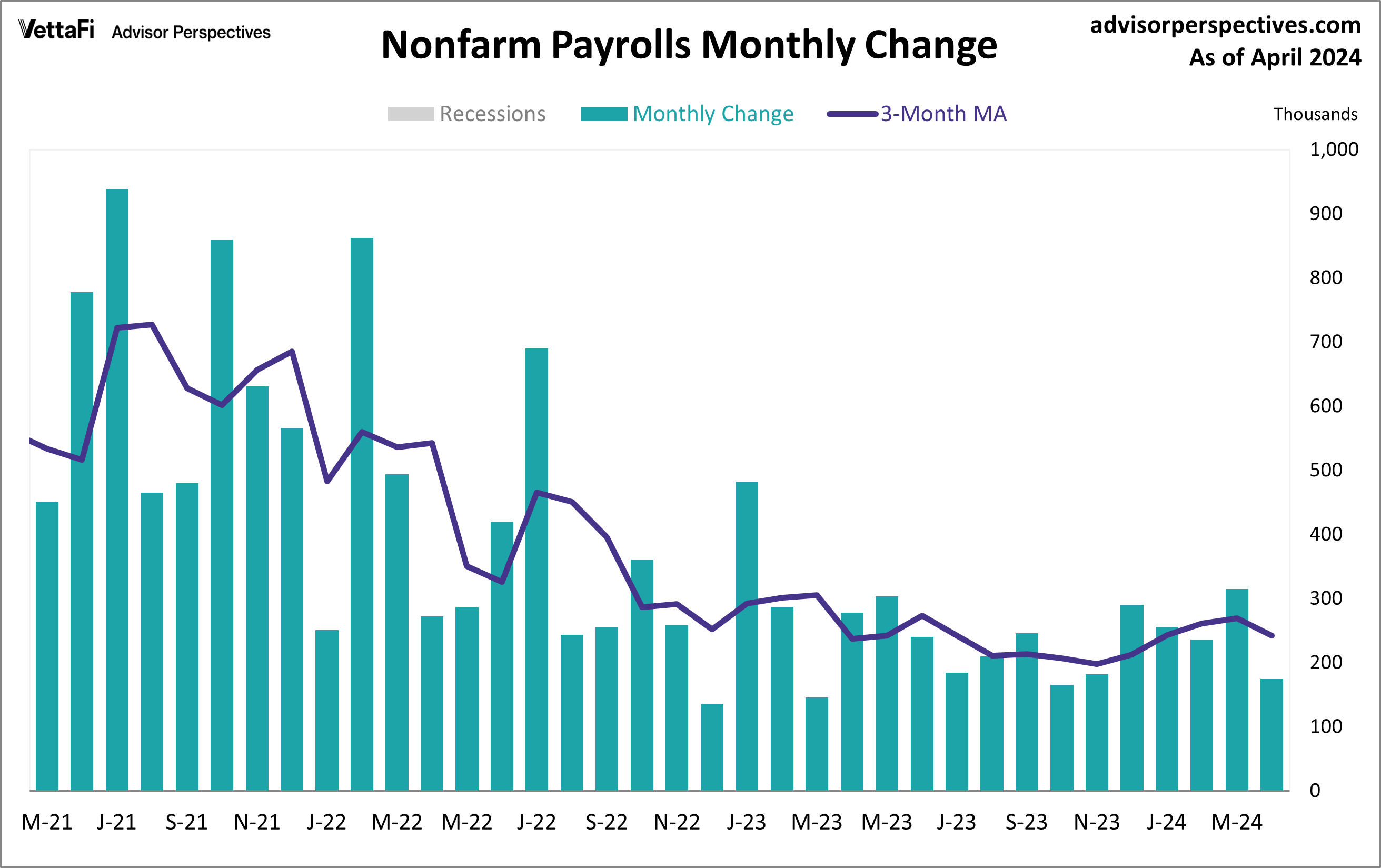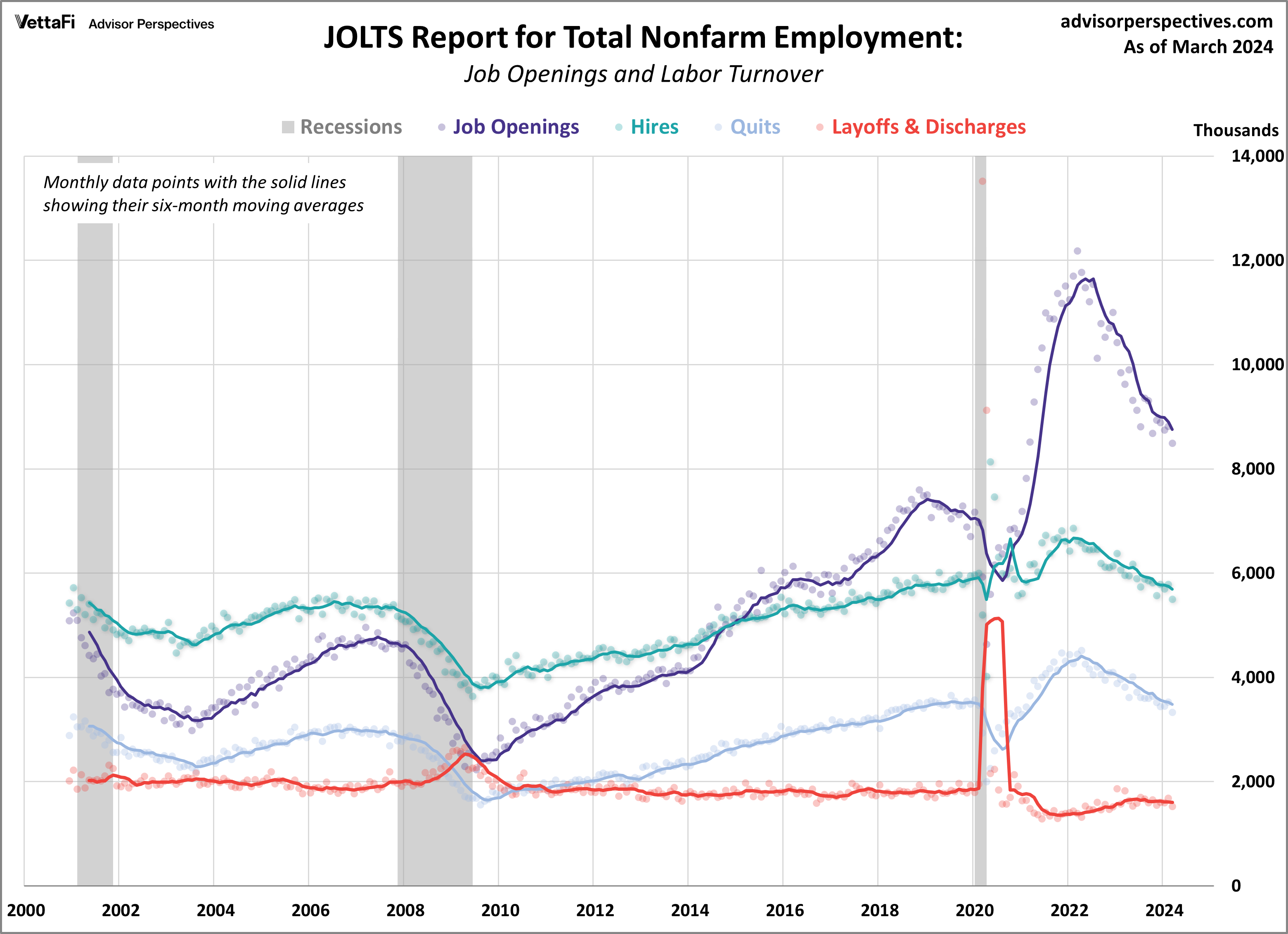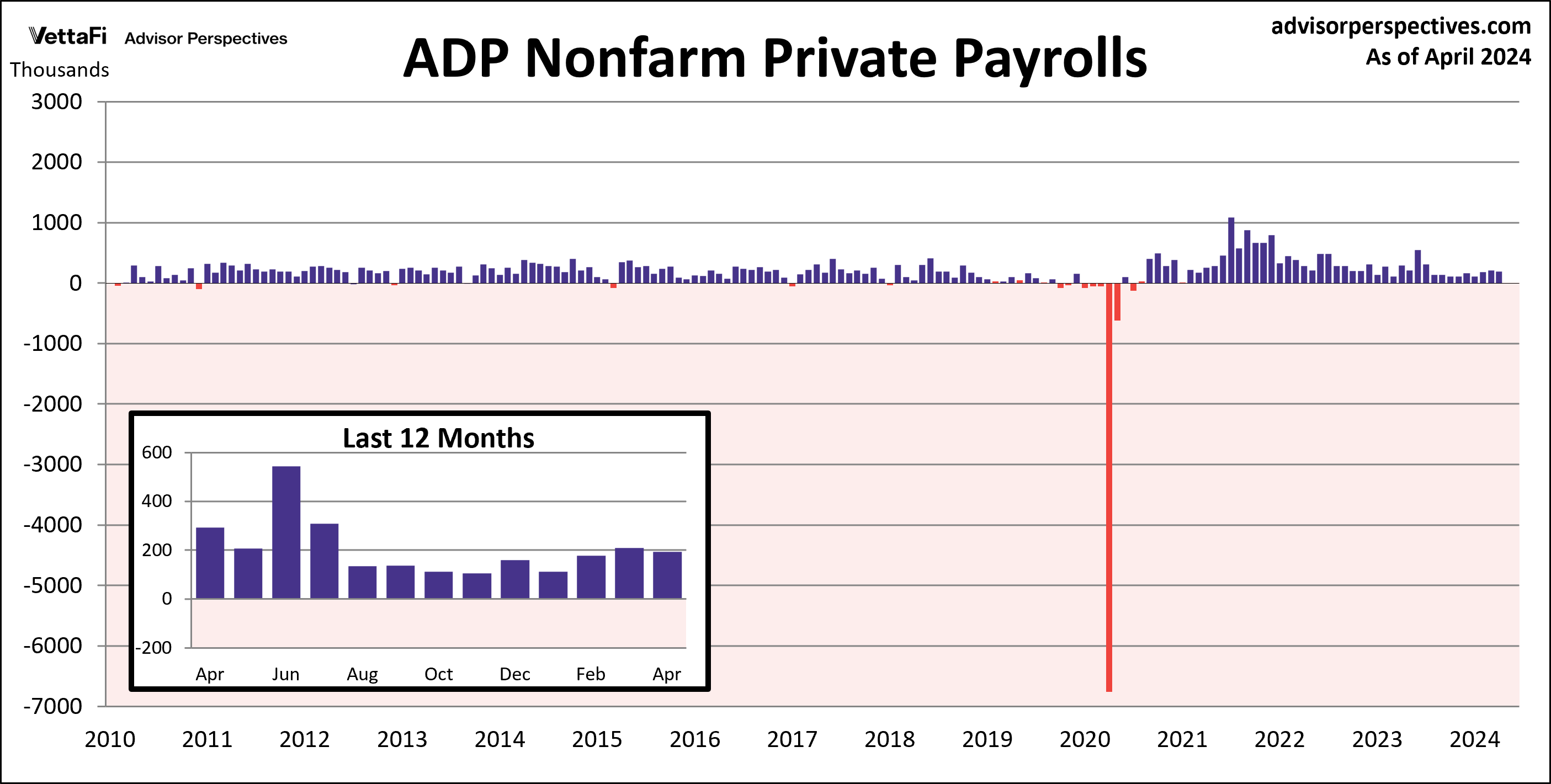Economic indicators are released every week to provide insight into the overall health and performance of an economy. They serve as essential tools for policymakers, advisors, investors, and businesses. That’s because they allow them to make informed decisions regarding business strategies and financial markets. In the week ending May 2, the SPDR S&P 500 ETF Trust (SPY) rose 0.31%. The Invesco S&P 500 Equal Weight ETF (RSP) was down 0.44%.
Among all economic indicators, some of the most closely watched are those surrounding the labor market. They provide insight into the health of the economy. But they also impact individuals’ lives and play a central role in government policy decisions. At its meeting last week, the Fed voted to keep interest rates between 5.25%-5.50% for a sixth consecutive meeting. Also last week, a slew of employment updates were released that offer insights into different aspects of the U.S. labor market. This article discusses the key data points from each report and explore their potential implications.
Employment Report
The labor market added fewer jobs than expected last month. The unemployment rate inched up, pointing to a cooling labor market. The April employment report revealed 175,000 jobs were added last month. That falls short of the expected 238,000 addition. April’s jobs numbers were a slowdown from March’s revised 315,000 addition. That was the smallest monthly gain in the past six months.
The report also revealed a slight increase in the unemployment rate to 3.9%, alongside a stable labor force participation rate of 62.7%. Additionally, hourly earnings saw a smaller-than-anticipated rise. Monthly wage gains of 0.2% compared to the forecasted 0.3%. On an annual basis, wage growth slowed to 3.9% instead of the anticipated 4.0%.
Overall, the latest jobs report provides some hope that the Fed will cut rates this year despite inflation remaining sticky.

Job Openings and Labor Turnover (JOLTS)
The March JOLTS report highlighted an easing labor market as job openings fell to a three-year low. The number of job openings decreased by 325,000 to 8.488 million. That came in below the predicted 8.680 million vacancies. Other key data points from the report showed that the number of hires, quits, and layoffs. Each declined from the previous month. Most notably, the number of hires dropped to 5.5 million. That is its lowest level since April 2020, Quits dropped to 3.3 million, its lowest level since January 2021.
The JOLTS data serves as a barometer for assessing labor demand. Any disparity between workforce demand and supply could potentially exert upward pressure on inflation. Since the beginning of 2023, the gap between the two has consistently narrowed. That’s because the overall trend in job openings steadily declined from its 2022 peak. In March, the number of job openings per employed worker dropped to 1.32. That is its lowest level in over two and half years.

ADP Employment Report
The average pace of hiring in the private sector has accelerated for three straight months while pay gains continue to stabilize. The ADP employment report showed that 192,000 private jobs were added in April, more than the projected 179,000 addition. The report also revealed little change in pay growth, with pay gains for job-stayers inching down to 5.0%. Meanwhile, pay gains for job-changers fell for the first time in three months to 9.3%, but remains higher than at the start of the year.
The pickup in April was most notable among large (500+ employees) to midsize (50-249 employees) companies, as they added 144,000 jobs combined, accounting for 75% of April’s private job growth. Additionally, hiring was broad-based across industries, with only the Information sector posting losses.
The six-month moving average, a more stable indicator amid monthly volatility, increased for a third straight month to 158,000. That said, the latest average is the fourth lowest level since November 2020, during the peak of COVID-19 layoffs, beating out only January, February, and March of this year.
Economic Indicators and the Week Ahead
The economic calendar is quiet this week, with only May’s preliminary report for the Michigan Consumer Sentiment on the schedule. Consumer sentiment, which could impact interest in the Consumer Discretionary Select Sector SPDR ETF (XLY), is predicted to remain at April’s final reading of 77.2.
For more news, information, and analysis, visit the Innovative ETFs Channel.









